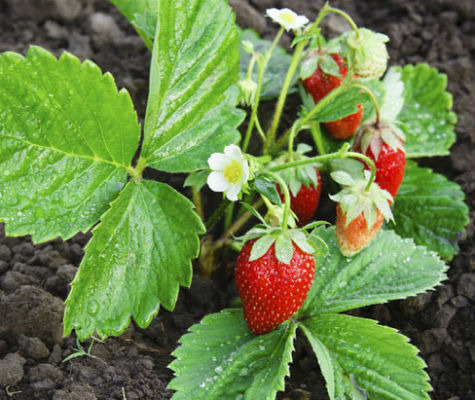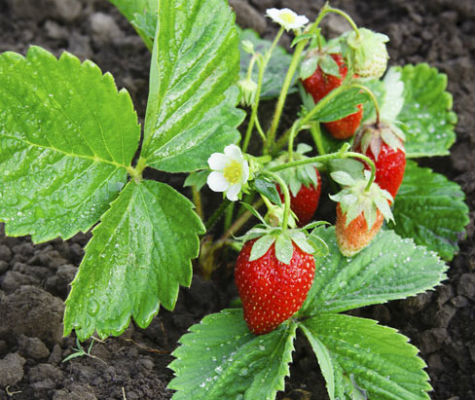How To Grow A Garden You Can Drink From
Fresh berry and vegetable smoothies are healthy and delicious — but are also best when they are super fresh. The nutrients in produce start to weaken as soon as they're picked, and conventionally grown fruits and vegetables have less nutritional content than you might suppose. One way you can ensure you're getting the freshest and best produce? Grow your own!
How to Grow a Garden You Can Drink From (Slideshow)
We checked in with Ron Salutsky, Ph.D., a gardener in Tallahassee, Fla. to tell us more.
"Once you've tilled, pick up a handful of soil and crush it in your palm. If it crumbles, that's good — crumbly soil means it's aerated," Dr. Salutsky says. "If it compacts and stays in the shape you squeezed it into, though — that's not great news. It's indicative that your soil is full of clay. Darker soil is also better than lighter, because the dark color means it is packed with organic matter."
So what plants are good for a beginner to start out with? It really depends on where you live. Rosemary is one of the easiest plants for a beginner gardener and it can grow just about anywhere. "Herbs generally tend to thrive on neglect," Dr. Salutsky notes. Once your baby rosemary plant has taken hold, you can just check in on it about once a week for a little watering. Basil is easy, too — it can take over your whole garden if left unchecked. Tomatoes tend to do well in most climates, although they prefer seasons and climates that are warm, but in which the temperature drops below 70 at night.
We've rounded up some great growing tips along with recipes, so you can use your garden-fresh fruits and vegetables in healthful, delicious smoothies. Varieties and growing seasons depend on your location — check in with master gardeners in your area for regional advice, or ask at a local gardening center or nursery to find out more about what will grow best in your climate and how to manage your local soil.
Strawberries
Strawberries love sun, so make sure they get planted in a space where they can get plenty — eight to 10 hours — of direct sunlight a day is what they like best. When it comes to soil, they can be pretty forgiving, but they like it loamy best. You may want to add some phosphorous depending on what type of soil you have. Ensure that they get good drainage so that their roots don't rot — you can create a small raised bed for them if your space tends to let water stand. They're pretty thirsty plants — water about one inch per week, maybe more when they just start to flower.
Click here for our Strawberry-Basil Smoothie Recipe
Kale
Fans of semi-shade and cloudiness, kale plants like to keep cold. In most climates, these plants tend to thrive if you start their seedlings indoors in the summer, and then transplant them to outdoor beds when the weather turns a little cooler. At that point, make sure you plant them in loamy, nitrogen-rich soil about two feet apart, and keep their soil moist. You'll know it's time to harvest when the leaves are about the size of your palm.
Click here for our Ultimate Energizing Kale Smoothie Recipe
Read More About How to Grow a Garden You Can Drink From
Jess Novak is the Drink Editor of The Daily Meal. Follow her on Twitter @jesstothenovak

